Dunhill & Escudo Navy De Luxe the Same?
- Homepage
- Pipe Tobacco Reviews
- Dunhill & Escudo Navy De Luxe the Same?
-
 Kevin Godbee
Kevin Godbee - Nov 16, 2010
- 1 min read
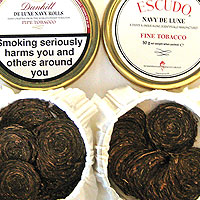 As I’m sitting here writing a review of Dunhill De Luxe Navy Rolls and describing what it is like, I suddenly realized that it reminded me of Escudo Navy De Luxe. Then I realized that they are both made in the same factory and both have Virginia and Perique. I stopped my review of Dunhill De Luxe Navy Rolls, for the second time in two weeks. Last time I found that the distribution and availability was in question – article here. Now I’ve shifted into a side-by-side comparison.
As I’m sitting here writing a review of Dunhill De Luxe Navy Rolls and describing what it is like, I suddenly realized that it reminded me of Escudo Navy De Luxe. Then I realized that they are both made in the same factory and both have Virginia and Perique. I stopped my review of Dunhill De Luxe Navy Rolls, for the second time in two weeks. Last time I found that the distribution and availability was in question – article here. Now I’ve shifted into a side-by-side comparison.
The similarities between Dunhill De Luxe Navy Rolls and Escudo Navy De Luxe are numerous. Are they actually the exact same thing in two different packages?
Dunhill De Luxe Navy Rolls & Escudo Navy De Luxe Similarities:
1. Both contain Virginia and Perique tobaccos.
2. Both have the same name with one word placed differently.
3. Both are rolled and then sliced into coins.
4. They are the same type of blend – Navy-style.
5. They are made in the same factory – Orlik.
Are they one and the same? Let’s look a little closer.

In the above picture, Dunhill is obviously on the left and Escudo is clearly on the right. Would you be able to tell which was which if the top of the tins weren’t placed by their respective tobaccos?
Let’s take an even closer look at the coins side-by-side.
You can see the above photo even larger when you click on it. They look quite similar, but with this closer inspection, they do start to look a little different. The Escudo appears to have some more yellow Virginia tobacco and the Dunhill (again on the left) appears a little darker.
So, the next question to answer is; "What do they actually taste like when smoked side-by-side?" I have smoked them both at the same time alternating back and forth in two pipes that are exactly the same shape and size.
Stay tuned to PipesMagazine.com to find out if Dunhill De Luxe Navy Rolls and Escudo Navy De Luxe are one in the same.
- No tags.
Written by Kevin Godbee
View all posts by: Kevin Godbee
15 Responses
Smokingpipes.com Updates
Watch for Updates Twice a WeekSite Sponsors
Recent Posts
Welcome to The Pipes Magazine Radio Show Episode 634! Our featured interview on tonight’s show is with Warren Ertle. Warren is an extremely accomplished musician with a PhD in music. He started early as a percussionist in sixth grade. Later his grandmother got him a cheap Casio keyboard which he taught himself to play. He started playing in blues bands in high school, and has been a pianist with jazz big bands for years. Even though he was already a professional musician, he took his first real piano lesson when he enrolled in college with his studies in classical music. He is of course a pipe smoker. At the top of the show we will have an Ask the Tobacco Blender segment with Jeremy Reeves. Jeremy is the Head Blender at Cornell & Diehl, which is one of the most popular boutique pipe tobacco companies in the USA.
Soon now, supposedly, our neighborhoods will shift from grinning pumpkins, skeletons in various assortments, and zombies dashing about to pretty reindeer, angels, and flashing lights illuminating homes with sparkling stars and laughing, scurrying Santas. But, lest we forget, there is the turkey season, fancy pie aromas wafting from kitchens, and a national pardon of a big Tom Turkey. Remember, now, that only one of these holiday personalities is a pipe smoker. And that is the hefty, bearded fellow in a bright red suit sitting in a sleigh with a herd of deer hitched up and ready to streak across the globe, bringing tidings of joy and many presents. Ok, the scene is set for the next couple of months, right? So, before we get too far off the beaten path, let’s just take a deep breath of fresh autumn air, shall we? Ahh. That’s better, isn’t it? What’s got the Pundit in a snit is not all the Halloween spooks who came a-jostling for candy. Or the wild turkeys gobbling in the backwoods or all the fuss and feathers over the big one—Christmas. No, it is that we might need to take note of all the little things that mean so much to us. Like a good sunrise (seriously, Pundit has not gone all Pollyanna.) Mayhaps we need to appreciate more of what we have than what we have not. Or something like that. Like, a good pipe in the morning with coffee as the dawn brings us coolish weather now that we have flipped the calendar to autumn. But it also brings beautiful leaves that have become a spectacle of technicolor in the wind. It is the little things. The rereading of an enjoyable book and finding something you did not see or learn in the first go-round. Or a stunning phrase you commit to memory with the re-read, while smoking that favorite pipe. And you notice a superior puff that just seems to be different. It’s in the air and the seasons of meaningful little things. It’s aromatic! Or perhaps it is that sense of satisfaction knowing and appreciating you made it to another day. With the world in a kind of rinse-and-repeat history, reminiscent of a Shakespearean play, it is perhaps a good moment to remember some of Pipedom’s philosophers whose cogent thoughts brought light to clear a path in the mists of confusion and confounding opinions. Ok. No gloom and doom. Just some down-home thoughts. Think of times in the past when history was running off the rails. It took our pipe-smoking thinkers (the mind workers of the world) to speak of better pathways to more light. Think for a moment, with a pipe in hand, these wizards of the world and word: Albert Einstein, J. R.R. Tolkien, Mark Twain, Sir Arthur Conan Doyle, Edwin Hubble, Bertrand Russell, C. S. Lewis, and Jean-Paul Sartre. All learned and enlightened. They offered wisdom instead of storms of meaningless roads to nowhere. All while smoking their pipes! Maybe especially with the help of their pipes in the art of thinking and philosophy. Recall the words of Mr. E=MC2 when he said, “I believe that pipe smoking contributes to a somewhat calm and objective judgment in all human affairs.” Amen and amen! Dealing with world-rattling events takes a calm and objective view of things, to the Pundit’s way of summing it up. You just don’t go messing around with quantum physics without a calm and objective approach, methinks. Or as the extraordinary physicist Robert Oppenheimer said after he and a team in the Manhattan Project at Los Alamos Labs developed a way to split atoms into bombs during World War II. “I am become Death, the destroyer of worlds,” said Oppenheimer referring to the development of the first nuclear bombs dropped on Japan. It must be pointed out that Oppenheimer was more of a cigarette smoker than a pipe smoker. Nonetheless, pipes were part of his personality. Now, if you have read some of the great authors of the past and present, their pipes were always nearby. Reading Sir Arthur Conan Doyle can be a three-pipe problem at times. S. Lewis and Jean-Paul Sartre require time with your pipes to reflect on the existential problems and solutions these authors provide in learned novels and other narratives. Or take Edwin Hubble and Bertrand Russell, philosophers of another world. Pipes are required for reading. The quantum lode of ideas Pundit is attempting to sort out is that our pipes are relaxing and stimulate our thoughts and creativity. Especially in these last months of the year. Many times Pundit has had that light bulb flick on while smoking my beloved pipes. And friends in Pipedom, it ain’t easy to turn on the lights in Pundit’s rock pit head. Now it’s time for a quote from a Pipe Smoker of the Past. Shelby Foote was born Nov. 17, 1916, in Greenville, Miss., and died June 27, 2005, in Memphis, Tenn. A fact is not a truth until you love it—Shelby Foote. A parting thought: It is said that famed Southern author William Faulkner carried a packed pipe in a coat pocket wherever he went. That’s one effective way to deal with workday conflicts and confusion. A calm and objective judgment in our everyday human affairs, as the quantum man said.
Welcome to The Pipes Magazine Radio Show Episode 633. Our featured guest tonight is Jon David Cole. JD is the Owner/Tobacconist at The Country Squire in Jackson, MS, and the accompanying online store. We’ll have JD and Brian talking about what’s new at the store and in the business in general. At the top of the show, Brian will discuss tobacco growing, what happens to the leaf, and provide updated information on where tobacco is being gown today. Tobacco production originated in the United States and we were once the #1 producer. It’s quite different now.
Well there’s nothing like a touch of the plague to usher in the changing season. Leaving the airport just when the first advertisements for all things pumpkin spice began to appear—lattes, muffins, shampoos, trash bags, and myriad other concoctions—so, too, my ability to breathe freely disappeared. The unfortunate side effect of losing one’s sense of taste and smell for weeks is the utter inability to enjoy tobacco. Not that I consider myself an expert on anything but my own tastes, but be forewarned that this review was made with mildly impugned sensory equipment. Just when a comforting pipe was most needed, its comfort was denied. Be that as it may, the road to recovery found me limping along on one lung this past month, trying to wrest the particulars of two blends on offer from Sutliff: the latest 175th Anniversary blend, Silver Quarter, as well as their spooky seasonal Maple Shadows II. Silver Quarter is a new style on offer from Sutliff, their first coin-cut blend. Naturally a Virginia-Perique, it is enhanced with a traditional core of black Cavendish. In the tin it holds much promise, with a lightly bready and very woody, if ever-so-slightly sour, aroma. After some time acclimating to air, the bouquet softens further and offers hints of the burley with some chocolaty notes wafting through the more dominant dry grassy aspect. The tin art is of a coin-style bas-relief bust, presumably of a founding Sutliff brother, à la The Old Boss On the reverse of the tin we find the blend’s description: Reflecting on Sutliffs 175 years of tobacco excellence, we came across a brand that embodies true value, SILVER QUARTER. This name pays homage to Sutliffs roots, the legacy of two brothers who popularized pipe smoking in the burgeoning mining society of San Francisco. We celebrate this heritage with a coin cut composed of the finest African Virginias, complemented by a core of Perique and Black Cavendish. The tin notes are, forgive the pun, on the nose for a good VaPer blend: mild tart sweetness peeking out from behind dried hay and slight chocolate undertones, with a lightly tannic finish of weathered oak. It is always a joy to prepare a coin cut, my preference being to put a few in my palm and vigorously warm my hands together to fully break them apart. These well-formed discs pack and light easily, and smoke with little prodding to the end of the bowl. For technical points it scores well—it smokes light, and it’s easy to tend the ember. While it gets sharp after a few quick bowls, pacing should be heeded to easily smoke down to the heel without inviting bite. Of the flavor, though, I am left a bit wanting. There are tart and high notes aplenty, but very little of the lemony citrus I would anticipate, as well as scant midtones; they tend more toward the red wine-vinegary and sour. The flavors are muted, also, lacking the sweetness and piquancy of other marques—the small measure of Perique tickles the nose now and again with peppery hints, and there is a smidge of a deeper sweetness to be found in the Cavendish from puff to puff, but overall it lacks some dynamism. The Virginias, to my palate, come off a bit on the dry side, and here they dominate the blend. The aftertaste and mouthfeel are neutral, again evincing more of the dry, woody, tartly tannic end of the spectrum. The blend has plenty of polish, but not enough depth or richness (*yet) to make it a standout. Here, comparisons are inevitable: Luxury Bullseye Flake has more sweetness, both from its Virginia as well as its Cavendish, and a better finish; Davidoff is similar but with a pronounced umami that is absent here; as for Escudo, I haven’t had any fresh tins lately so it would be unfair to compare. While it rates as a solid, fairly mild smoke, particularly to lovers of the genre, it does not surprise with any exceptional flavors. To be fair, all the boxes have been checked for the blend to benefit from some real aging, and it would be worth checking in on this after a couple of years sealed away. I’ve set half my tin aside to sample again in a month or two, in case I’m merely suffering from the lingering effects of parosmia, and will amend this review in that case. Maple Shadows II, on the other hand, made up for the weeks of sniffling and sneezing I’d endured. Offered in a full 8 ounce tin with delightfully spooky Halloween art, it’s (hopefully) enough to last through the season. Somehow I had missed this last year, so it’s a real pleasure to get some in my candy bucket this year. As the chilling winds of autumn draw eerie prattle from contorted, deciduous limbs, we find ourselves possessed by the spirit of the season. Bewitched by a dissonant charm, we’ve created Maple Shadows. In a season that is defined by the unlikely harmony of treats and frights, we’ve joined the enchanting sweetness of maple with the earthy spice of Dark Fired Kentucky for a smoking experience that captures the senses with an otherworldly fusion of flavor. This may be the best aromatic blend Sutliff’s ever made—and they make a ton of them. First off, it’s not overbearing in the least—quite the opposite, it is also one of the more restrained aromatics they’ve ever made, with a clear but very light topping that melds oh-so-well with their choice Kentucky added to the mix. Opening the tin, the sweet maple is up front and center, but so too is the must of fallen leaves, bready pie crusts, and a crackling fire in the hearth—a perfect invocation of Herbstdüfte in a can. Packing best in an open and capacious bowl, the flavoring is subtle, and recedes to the background while puffing. With a sweet coffee or tea to accompany, the aftertaste of the maple is reinvigorated on the palate […]
Welcome to The Pipes Magazine Radio Show Episode 632. Our featured guest on tonight’s show is the host of the Pipe & Tamper Podcast, Mike Murphy. Brian and Mike will have an extended chat revolving around the days before, during and after the Las Vegas International Pipe Show. We will hear about their travels to the show and the anxiety of Hurricane Milton bearing down on Florida at the same time while running a show and not knowing if your house is going to be there when you get home. In the end, the show went great and our homes survived, although many others in Florida were not so lucky. We’ll have clips from the show, and shoutouts to other podcasts and vlogs that were broadcasting from the pipe show.
Vegas Baby The show started out strong on the 14th floor hospitality suites hosted by the Vegas Pipe Show and Smoking Pipes as well as room hopping to carvers, estate sellers, and vendors to pre-game for the festivities. If you’re interested in what that looks like I’ll refer you to last years pipe show round up. I circled with Brian Levine to get the totals in comparison to last year: This year’s show numbers: 108 Exhibitor tables, 445 attendees, 3,250 Raffle Tickets, 100ish dinners, 172 Rooms in the Hotel. Last year, by comparison, 107 exhibitor tables, 425 attendees, 2,200 raffle tickets, 104 dinners, and 175 rooms on Friday and Saturday nights. We were at capacity, basically, when it came to vendor tables and the dinner, so there is no physical room for growth at this point except for attendees. That said, we filled that smoking lounge to the brim. New Carvers Spotlight Garret Woo (Pipes by Woo) How long have you been carving? Garret: I’ve been carving since 2021, and I’m guessing your next question is probably how’d you get started carving? James: Yes. Garret: In 2021 I took a break from my full time job – that included machining and assembly work and I thought maybe it was time I made something that I would like and I started looking at youtube and Instagram and putting together my shop. I did struggle on the stems to start and there was a lot of failure at the beginning. James: How many pipes have you made so far? Garret: I number my pipes, so I just finished up 186. James: What is your favorite shape you’ve been making? Garret: I really dig Canadians and pipes with longer shanks and lovat Canadian blends. I like to play with different shapes of stems on the longer shanked pipes. The billiard would be my go-to shape but I want to learn more techniques on freehanded shapes. I like to put brass and copper adornments on my pipes with my machining background it helps. James: What is the craziest thing you’ve seen at this show? Garret: The first thing that comes to mind is the table over there with C-Pipes with the shapes and the size and petiteness and the intricate details they did. You can check out what Garret is working on by going to his Instagram. Stefan Cashwell James: how long have you been carving? Stefan: about 3 years. James: What’s the craziest thing you’ve seen at the show? Stefan: The Adam Davidson pipe with the clear shape and the bamboo—I don’t know if it’s 3D printed or what, but it’s amazing. James: What’s your favorite shape to do? Stefan: That’s a tough question. I think they’re all the same shape, but what’s fascinating is that Dublin, volcano, and blowfish are all the same depending on how you turn them. Playing with that, with all its variations, is a lot of fun. My favorite accent to use is also horn; it’s finicky, but it’s a great accent on pipes. You can check out Stefan’s work on his Instagram. Science: Meet Pipes I chatted with Chris from the San Diego Pipe Club; he started off doing stem replacements for estate pipes but also improved the airflow. James: How are you doing 3d printing? What is the thought process? Chris: It’s a 3D-printed pipe with a briar insert. The design is a calabash meets a Peterson system meets a metal Falcon/Kirsten radiator style. It is a bottom draft smoking bowl like a radiator like those metal pipes. The inside chamber is a calabash. The stummel and accent rings in the stems are all 3d printed. The insert is briar, olive wood, or I have the potential to use meerschaum as well. This idea came about through the San Diego Pipe Club, wanting to see if we could 3D print a pipe and being curious about the technology; I have a printer and design ability, so here we are. James: What’s the type of plastic you’re using? Chris: It’s all PLA plastic, a renewable potato starch plastic that is food-safe. The stummels are printed with a plastic that has wood in it 40% wood fiber, bamboo, rosewood, ebony, redwood, and walnut are the woods I’m printing. For the accent rings I just got a new material that I’m printing that has 40% copper, so its real metal that you can sand, and polish the same as wood filament. The stems are 3d printed as well. The concept is renewable and cheap from a production standpoint, with the ability to make a very high quality smoking pipe based on the experience. By combining the calabash system pipe and bottom draft hole and using 3d simulations to see airflow, I can see where I’m having eddies and ripples in my current, and see where my moisture and all the particles are dropping back out from a vapor to a liquid. Most people who have tried these say the stems are clean, and they don’t even have to run a pipe cleaner afterward because everything collects at the bottom. Chris has also been experimenting with color-changing plastics so you can see the hotspots. Chris said he was able to use this to slow down his cadence, which, of course, could mean you could get a slow-smoke training pipe to teach yourself to perform better. If you’re interested in learning more or want to check one out, you can contact him on Instagram: Copper Beard Pipe Works The Negative Space The show was buzzing about one specific pipe, which had everyone guessing how it was made. I chatted with Adam Davidson briefly about it. James: How did this idea come to fruition? Adam Davidson: Smokingpipes.com had an expo back in August open to all of the makers they carry. The theme was to make a pipe utilizing bamboo. Given that the last time we had the expo I made a smooth Almond with three bamboo shanks, […]




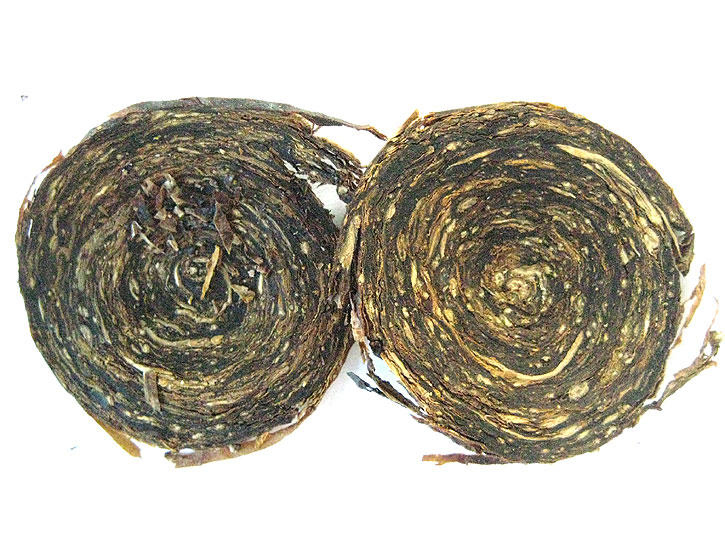



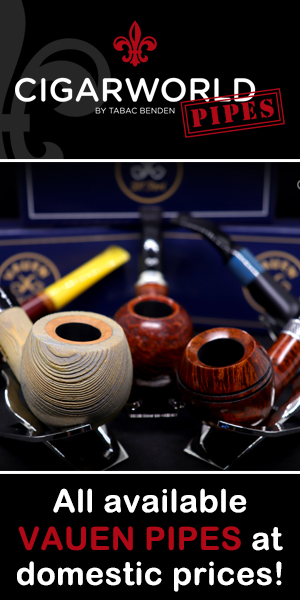
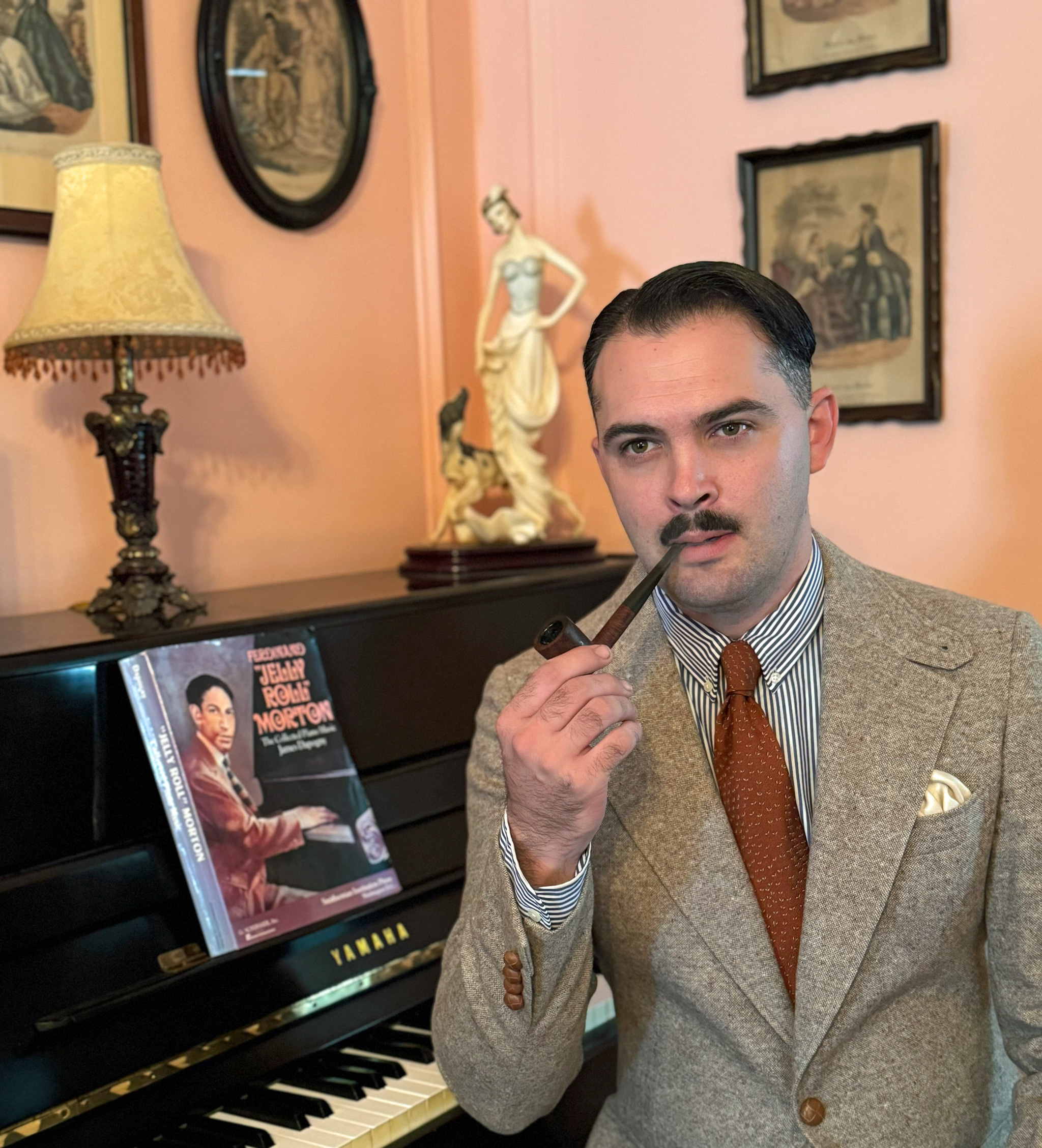
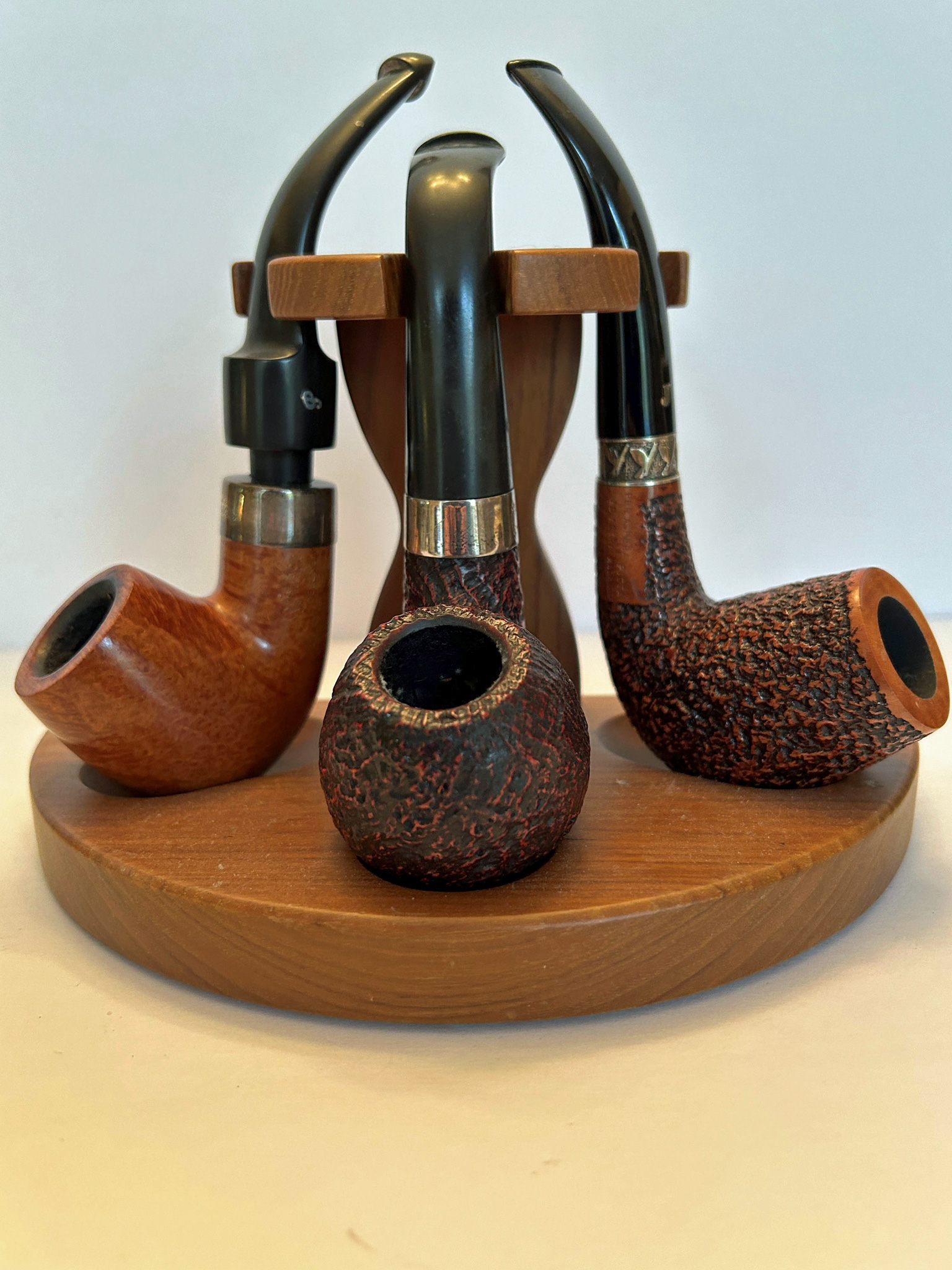
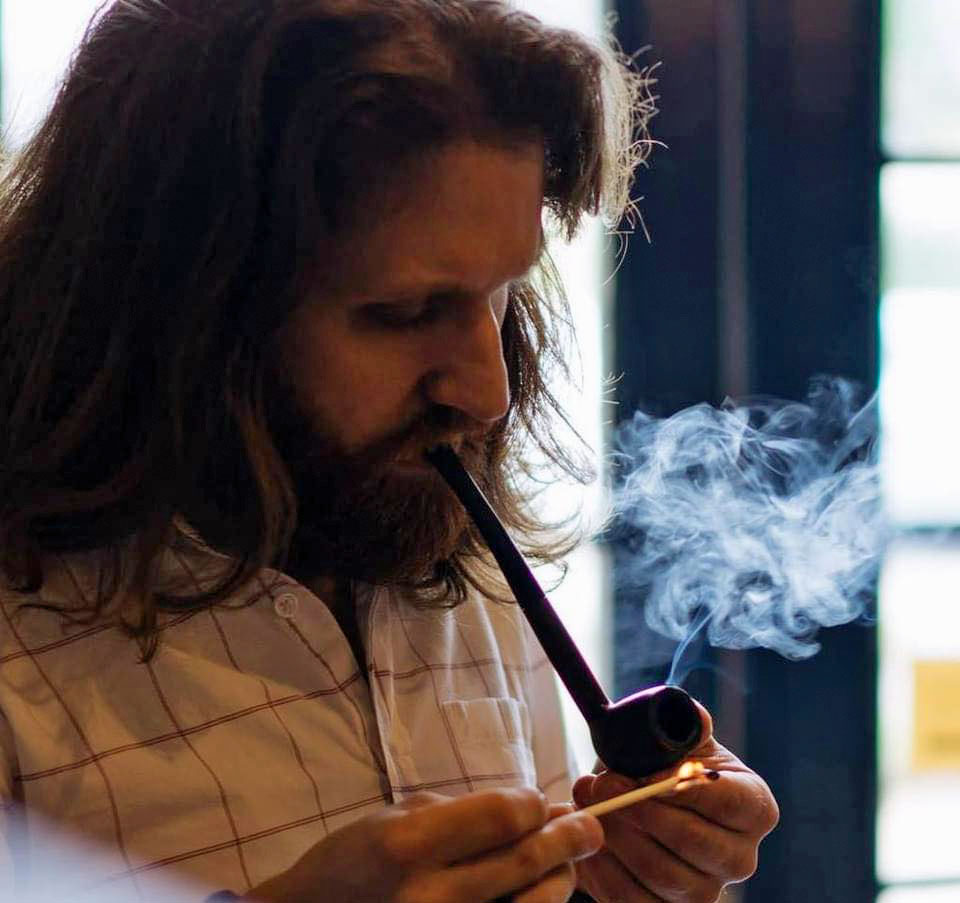

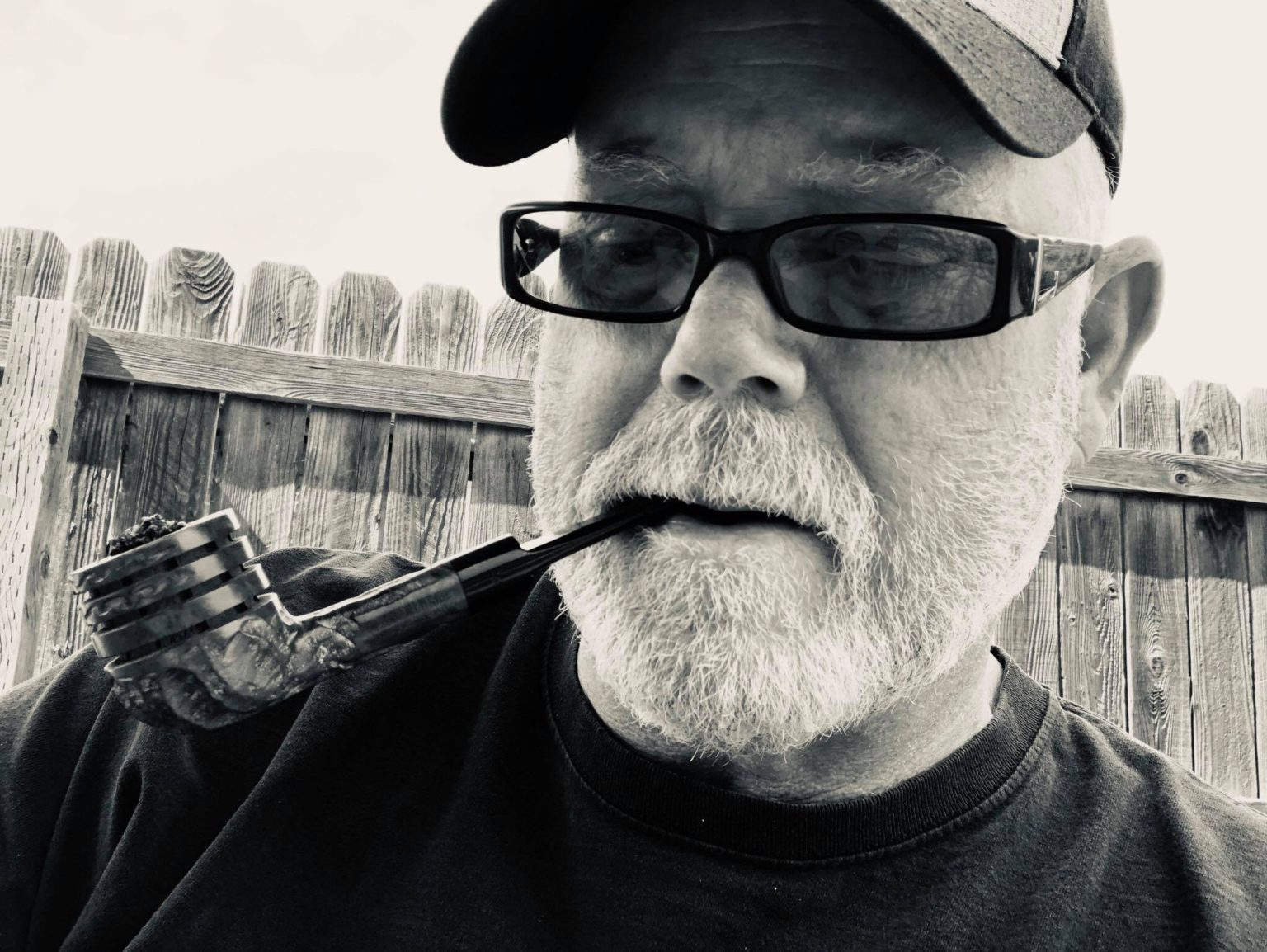


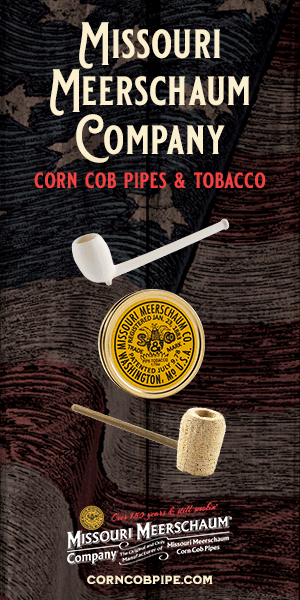
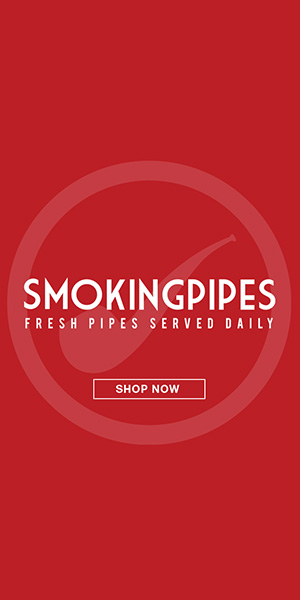

I agree it certainly appears the Escudo has more Va in it. My vote is they are a bit different but probably not a lot.
Good Day.
A long time ago I smoked the Dunhill Luxary Rolls, and while similar to the A&C Escudo, the Dunhill had a far more sweet tone. The A&C Escudo a more citric edge. Both are vastly different than the original Cope’s Escudo. That being said, I do and have enjoyed all three.
Regards
Michael J. Glukler
On the labels, under the name you will find an identical pen-stroke flourish.
The coin diameters look about the same. Are the coins the same thickness?
To me it looks like the proportions of bright & dark leaf are different. Are these two coins representative samples? Or do they represent the extremes of the brightness spectrum. Did you, or can you ask anyone at Orlik? — maybe that cute girl who worked with the Orlik Golden Slices.
I understand that the Escudo is made by Peter Stokkebye. Would suspect
there’s more Virginia in the Escudo than the Dunhill. I love
Stokkebye because it’s always full of flavor no matter which
blend and equally mild. Can’t wait to hear about your experiment.
Cheers
Stephen Spring
Send me a tin of the Dunhill and I’ll help with the review!
It would be also be a good thing to ascertain if both tins are of the same age. I find that tobaccos tend to darken in the tin with age. If they are identical tobaccos but one is older, the tasting results could be less than decisive.
I agree with Mike Glukler regarding the difference between the two. The old Cope’s Escudo is the gold standard to which current production aspires but does not equal. Escudo seems to have more a fruity, spicy bite than Dunhill, which I would attribute to a higher perique content and/or lower sugar content in the Virginia component.
I’m with Gunner777 on this one I believe there to be more Virginia in the Escudo.
I can’t speak the the Dunhill, but I know I love the Escudo Navy De Luxe.
Good question Kevin.
Lawrence
cortezattic said: “On the labels, under the name you will find an identical pen-stroke flourish.”
Oh yeah! How did I miss that! There are exactly the same, and my other Dunhill tins do not have that mark.
cortezattic said: “The coin diameters look about the same. Are the coins the same thickness?
To me it looks like the proportions of bright & dark leaf are different. Are these two coins representative samples?”
The diameters and thickness are the same, and the coins are representative samples.
Interestingly, when you look at the coins with the naked eye, they look the same. It is only in the close-up photography that they look different.
stephenspring said: “I understand that the Escudo is made by Peter Stokkebye.”
Stokkebye tobaccos are made by Scandanavian Tobacco Group, which owns the Orlik factory. The Orlik factory makes all the Stokkebye branded blends, and all the other brands that are imported and distributed by Villiger Stokkebye, International.
You can read about that here:
https://pipesmagazine.com/blog/pipe-manufacturer-retailer-spotlight/erik-stokkebye-of-villiger-stokkebye-international/
yachtexplorer said: “It would be also be a good thing to ascertain if both tins are of the same age. I find that tobaccos tend to darken in the tin with age. If they are identical tobaccos but one is older, the tasting results could be less than decisive.”
Good points yachtexplorer. It is hard to know the exact answer, but here is what I do know. I acquired the Escudo tin about a year ago and I received the Dunhill tin 3.5 months ago. However, the Dunhill tin has been unsealed for 3 months and I just opened the Escudo tin this morning.
The Escudo tin aroma is much stronger than the Dunhill. It is sweeter and the Dunhill is more hay-like. This is probably because the Dunhill tin has been open longer. However, when taking individual coins from each tin and smelling them, they seem about the same.
Ah, two classics that I havn’t tried yet. The Escudo’s been on my list forever it seems … Gotta do something about that soon! Also been eyeballing Orlik Bullseye for a while.
Thanks for the read + beautiful pictures, Kevin!
I can’t fully compare the two yet as I’ve not smoke the Navy Rolls, but the general consensus is that Escudo is more spicy and citrus-y. I would agree, Escudo has a nice Citrus-spice flavor to it.
I used to smoke Cope’s Escudo all the time so it was a real letdown when the new recipe came out. The one I really miss is Balkan Sobraine 759!
Dunhill has a darker toned virginia, may this be due to aging? This may cause a sweeter and softer smoke…
I just got a tin of the Navy Escudo by Stokkebye and I really like it. The taste of perique comes through moderately and the virginia is definitely there. I have never tried the Dunhill, but I would relish the opportunity to try it.
Here is my update:
https://pipesmagazine.com/blog/kevins-blog/dunhill-escudo-navy-de-luxe-the-verdict/